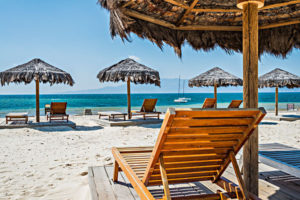
Honghe County Rice Terraces Photography Tour to Nimei, Samaba, Yangliu and Tasa Rice Terrace
Nestled in the southern part of Yunnan Province, China, Honghe County is home to some of the most stunning rice terrace landscapes in the world. The rice terraces are known for their intricate design, vibrant colors, and dramatic changes in elevation, making them an ideal destination for photographers and travelers alike. In this travel blog, we will take you on a photography tour of the Honghe County Rice Terraces, including stops at Nimei, Samaba, Yangliu, and Tasa Rice Terrace.
Nimei Rice Terrace: Our photography tour begins at Nimei Rice Terrace, located in the town of Nimei. The terrace is known for its unique “two-story” design, where rice is grown on both the ground and the second floor of the terrace. This creates a fascinating visual effect, with water cascading down the sides of the terrace and reflecting off the rice below. The Nimei Rice Terrace is also a great spot for capturing sunrise and sunset shots, as the terrace is illuminated by the warm light of the sun.
Samaba Rice Terrace: From Nimei, we move on to Samaba Rice Terrace, which is located about 10 kilometers away. The Samaba Rice Terrace is known for its winding paths and dramatic changes in elevation, creating a truly magical landscape. The terrace is also home to several traditional Naxi villages, where guests can learn about the local culture and customs. The Samaba Rice Terrace is a great spot for capturing panoramic shots, as the terrace stretches out for miles and is surrounded by lush greenery.
Yangiliu Rice Terrace: Our next stop is Yangliu Rice Terrace, located in the town of Yangliu. The terrace is characterized by its red soil and unique irrigation system, which uses natural springs to water the rice fields. The Yangliu Rice Terrace is also a great spot for capturing shots of local farmers working in the fields, as well as the vibrant colors of the rice as it ripens.
Tasa Rice Terrace: Our final stop on our photography tour is Tasa Rice Terrace, located in the town of Tasa. The terrace is known for its impressive elevation changes and intricate design, which create a stunning landscape that is perfect for photography. The Tasa Rice Terrace is also a great spot for capturing shots of the local Naxi people, as the town is home to several traditional villages and cultural events.
Conclusion: The Honghe County Rice Terraces are a must-visit destination for any photographer or traveler looking for a unique and stunning landscape. With their intricate design, vibrant colors, and dramatic changes in elevation, the rice terraces offer endless opportunities for capturing stunning shots. Whether you are a professional photographer or simply an enthusiast, the Honghe County Rice Terraces are a destination that will leave a lasting impression.
Although there are few tourists have been to Hani Terrace(哈尼梯田)in Honghe county(红河县), I found that some terraces have their own features after searching some tour routes of photography groups, such as this route can show the beauty of these terraces well: Honghe county(红河县)—Nimei Rice Terraces(尼美梯田) and Nimei village(尼美村)—Baohua Town(宝华乡)and Samaba Rice Terraces (撒玛坝梯田)—Yangliu (Willow)Rice Terraces(杨柳梯田)—Edei Reservoir(俄垤水库) — Tasa village(他撒村)and Zonglv Rice Terraces (他撒棕榈梯田).
There’s a viewing platform on the way to Nimei village(尼美村),and I’m not sure if it is Guidong Rice Terraces(桂东梯田)since no signboard could be seen around there. The size of this terrace is quite large, so in the morning, when the clouds and mist are float in the valley, the terrace is loomed up ahead of us.
There is a sign beside this viewing platform, it’s shown right to Nimei Terrace(尼美梯田)and forward to Samaba Terrace(撒玛坝梯田). We decided to go to Nimei Terrace first. Nimei Terrace is not far away from Nimei village(尼美村), and there’s no signs around there, just enjoy the scenery yourself along the roadside.
Terraces near the Nimei village(尼美村)are also quite large, but usually it’s not the right time to take beautiful pictures under the midday sun at 11 AM. There is a tar road on the way to Hongxing reservoir(红星水库), which is lead to the Samaba Terrace(撒玛坝梯田) in Baohua Town, but we haven’t found it on the way to there, after we got there and asked an old doorman for some information about that, we found it on the way back. This road was under construction, so part of it are muddy, fortunately it’s still passable for car. You can not find this road in Baidu(百度) or GAD(高德) map. We moved through the terrace and shot pictures from every angle all the way.
After three bowls of red rice noodles in the noon, we came to Samaba Terrace(撒玛坝梯田), which is still free to tourists yet, better hurry up if you want to come because they are building wooden walkway and entrance gate. Like the saying goes “you can’t image how large a terrace could be until you come to Samaba”, (“不到撒玛坝,不知梯田大” in Chinese)the scale of Samaba is shown to us obviously.
This is an aerial photo of Samaba (撒玛坝).People who shot Samaba terrace are usually stay overnight at Baohua Town(宝华乡), so they can capture pictures of the sunrise and sunset, but we can only took pictures like this since it’s midday. There is an indicator on the entrance of Samaba, which is point to Yangliu (Willow)Rice Terraces(杨柳梯田). We didn’t expect to take beautiful pictures of Yangliu (Willow)Rice Terraces(杨柳梯田) under the midday light firstly, but the pictures are really out of our surprise.
杨柳梯田后就是和梯田了,俄垤水库在杨柳梯田和他撒樱花棕榈梯田之间。
Behind Yangliu (Willow) Rice Terraces(杨柳梯田) , there are the Edie Reservoir (俄垤水库)and terraces, the Edei reservoir is located between the Willow terraces and the Tasa sakura palm terrace(他撒樱花棕榈梯田).
Then we went down, continue to visited the Sakura Palm Rice Terraces in Tasa Village(他撒樱花棕榈梯田). We didn’t see the sakura but some palms. Tasa is the name of a village.
We stayed in Honghe County at night.
Source from http://blog.sina.com.cn/s/blog_6c0855970102wpj0.html















